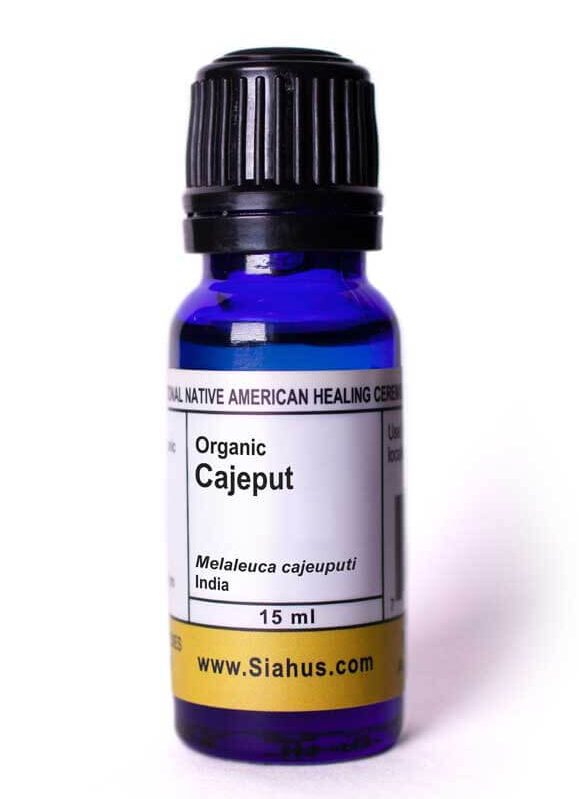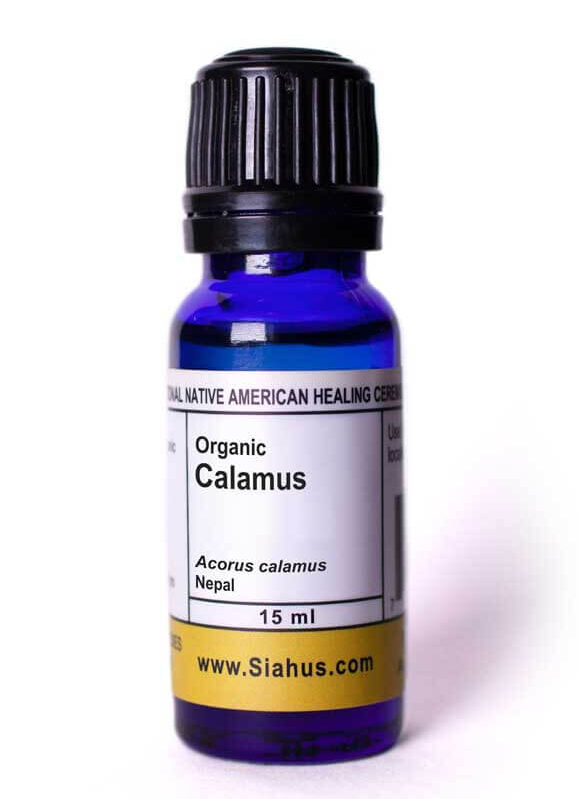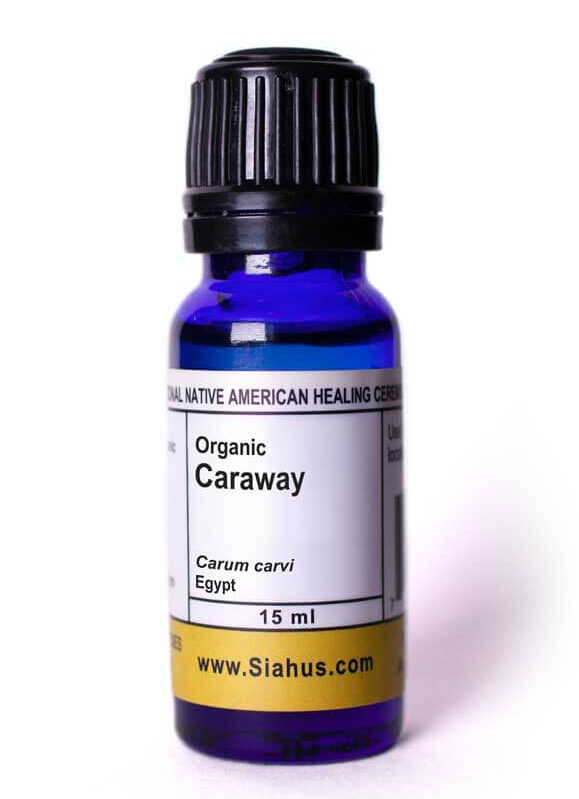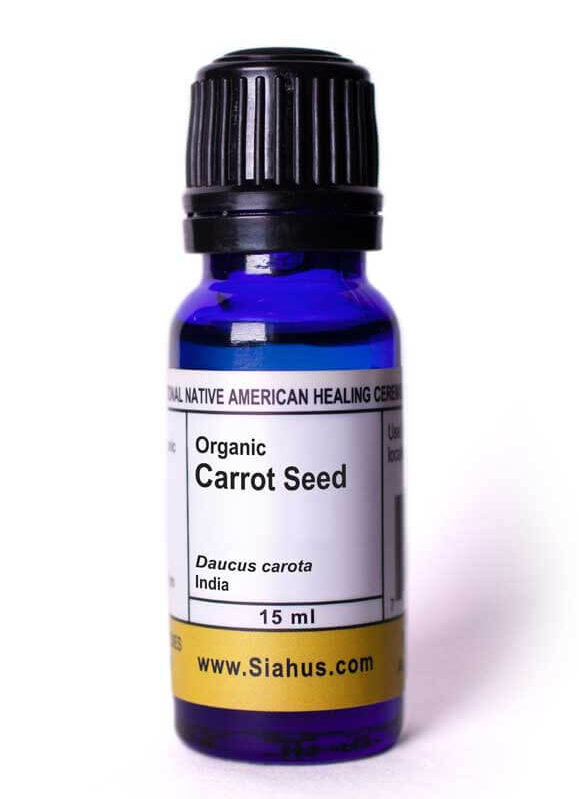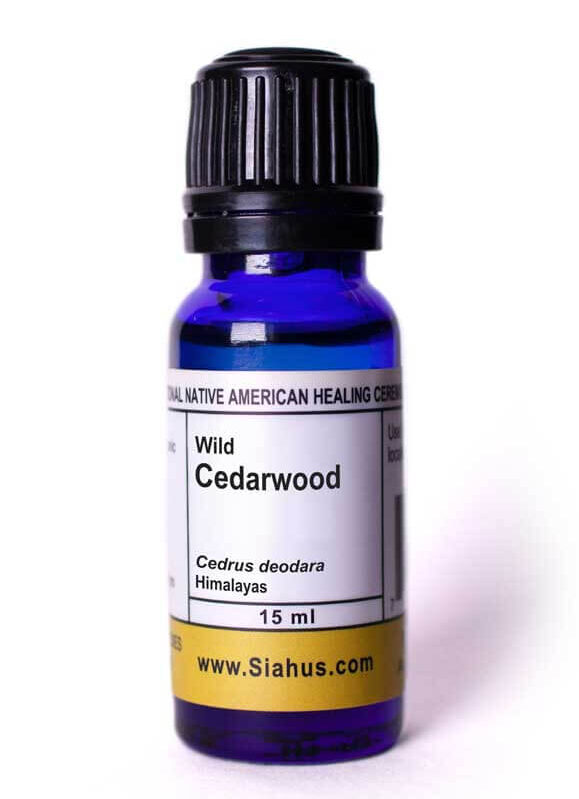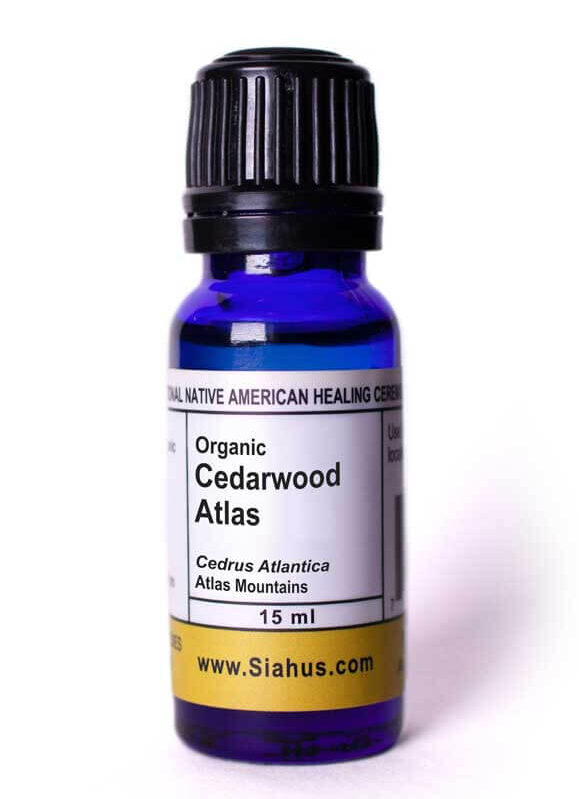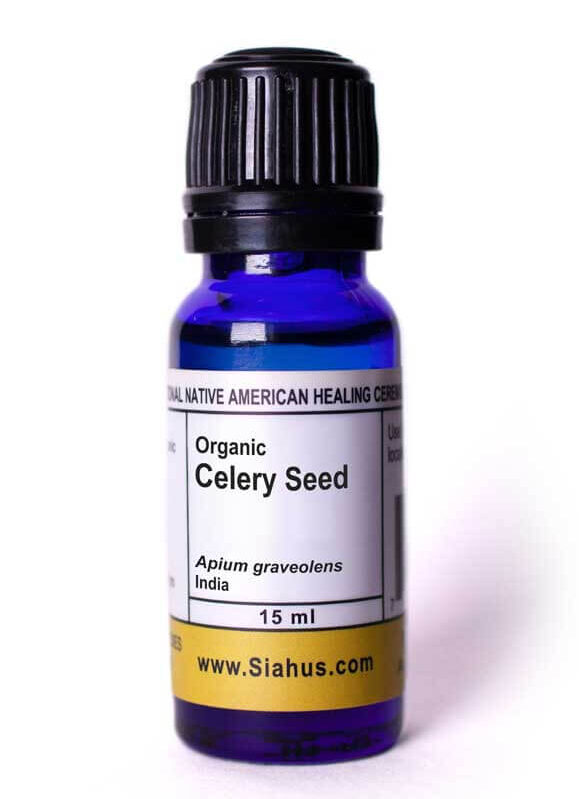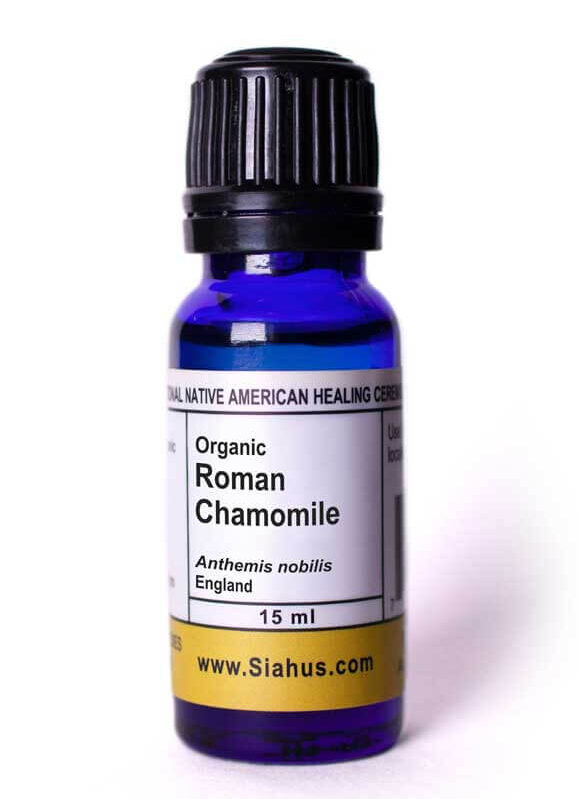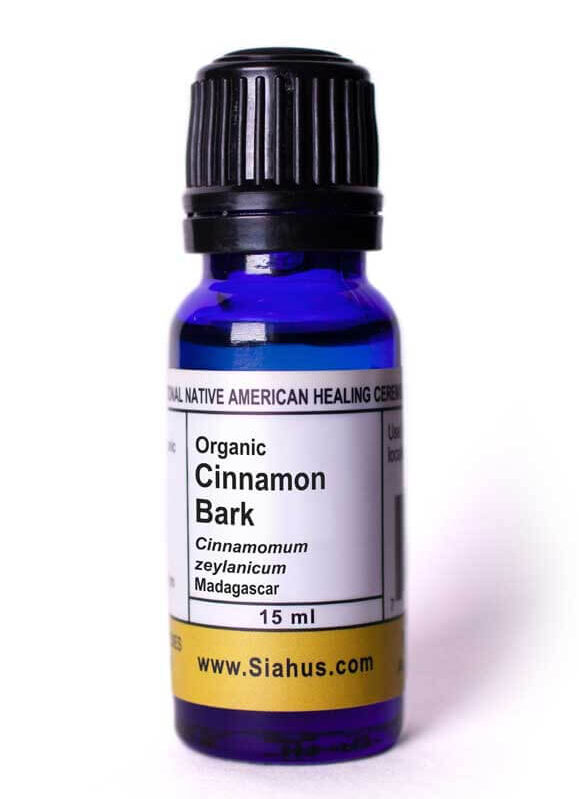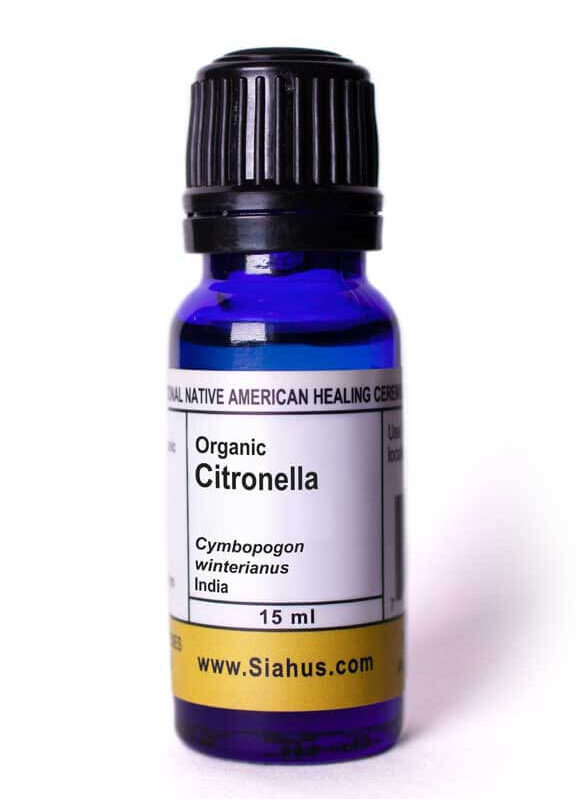Showing 13–24 of 98 results
Filter
Categories: Essential Oil Singles
Cajeput
$13.50
Man Found Standing Writes:
Cajeput, Organic: India (Melaleuca cajeuputi –Hydro Distilled)
Asa relative to Tea Tree and Melaleuca, Cajeput (also spelled as Cajuput) was introduced to Europe from Indonesia in the early seventeenth century but was rare and expensive. Because the best therapeutic results occur when the plants leaves and twigs are macerated and soaked in water for at least eight hours, the most therapeutic oil will be hydro distilled.
This tree grows quickly and can grow in water saturated areas; it is highly cultivated to assist to protect the swamp areas. Having similar traits and chemistry to Eucalyptus and Tea Tree but considered harsher in its effects, this oil has along history of therapeutic use.
Primary Usages: Traditionally it has been used for pain (sorer stiff muscles, arthritis, sciatica, lumbago), inflammation, decongestant, expectorant, insecticide, insects bites, neuralgia, and as a counterirritant. This oil is highly beneficial for respiratory conditions (improving breathing, bronchitis, colds, catarrh, coughs, sinusitis, flu, viral infections, asthma, and throat infections). Cajuput is considered a safe treatment for bacterial and fungal infections.
Secondary Usages: Used as a general health tonic for rheumatism, infection fighting, and overall health. Beneficial for headaches, earaches, toothaches, sore throats (laryngitis), gout, fevers (cholera), and skin(oily, spots, acne, ringworm, bruises, rosacea, chilblains, scabies, scaly skin, allergic reactions, eczema, psoriasis), and cramping especially by menstruation.
Has Been Reported: Expels roundworms, intestinal parasites, kill pathogens, takes the itch out of insect bites, assists tissue regeneration, tumors, bladder infection, nervous vomiting, and lameness.
Descriptor: Analgesic, Antimicrobial, Antispasmodic, Antiseptic, Expectorant, Alkalizing, Immune Stimulant
Application: Diffuse and put on location. Add to a bath, lotions, massage oil to assist with aches, pains, psoriasis, and acne.
Blends Well With: Clove Bud, Eucalyptus, Helichrysum, Marjoram, Oregano, Rosemary, Tea Tree, and Thyme
Caution: Because of the high Cineole content, this oil is toxic in large extreme amounts and may cause adverse reactions in some people. Use in small amounts. Avoid application near infants because of the risk of spasm of glottis, due to cooling effect on respiratory system.
Influences: Stimulating aroma assists in promoting a clear, energized, and uplifting mind. Assists in restoring a sense of inner purpose when one is feeling lost or alone.
Medicine Wheel: Primary North. Increases Guardian Qi (Immune System). Tonifies and Boosts Lung Qi.
Recipes: During a cold or flu add five drops each of Cajeput and Ginger to your hot bath and soak for twenty minutes. Depending on your skin sensitivity, you may want to mix with a teaspoon of carrier oil or add the oils to Epsom salts before adding them to your water. For a calming massage oil add two drops each of Cajeput, Rosewood, Basil, and Lavender to your carrier oil.
Country of Origin: India, Organic
Botanical Name: Melaleuca cajeuputi
Plant Part: Leaves and Twigs
Note: Fresh, Herbaceous, Fruity
$13.50
Categories: Essential Oil Singles
Calamus
$20.00
Man Found Standing Writes:
Calamus, Organic: Nepal (Acorus calamus)
With a strong worldwide history of spice, fragrance, and therapeutic usages, Calamus has been used for a wide array of purposes for many thousands of years. Even though the plant is not considered to be native to Egypt, its earliest recorded Egyptian mention was around 1300 BC. Calamus is one of the ingredients of the “Holy Anointing Oil” mentioned in Exodus 30: 22-25 and some North American tribes frequently relied on the therapeutic properties of this perennial plant.
Preferring marshes or well watered muddy areas, the roots grow six feet in length and have the strongest fragrance. The chemistry of the oil will vary greatly depending on what part of the plant is being distilled and what part of the world the plant is grown in. For the most part the Therapeutic Oil has a very strong somewhat unpleasant fragrance.
There is quite a lot of miss information and poor science being put out about this oil mostly because of the high levels of beta-asarone. In 1968 the oil was banned as food additive by the FDA because laboratory studies showed that extreme doses for long periods of time of the isolated chemical beta-asarone assisted laboratory animals to develop tumors. Since Healers are not into extreme doses for long periods of time, and because there is a long historic therapeutic use for this plant, its proper use can have wonderful therapeutic benefit.
Primary Usages: General health tonic to ward off illness (reduces fevers and fights infection) and microbes. Assists the brain and nervous system (stimulating, cerebral circulation, neurodegeneration, neuroprotective, epilepsy, memory loss, shock, calming effects, assists in the treatment of Alzheimer’s disease). A well known remedy for the respiratory system (throat irritations, inflammation, coughs, bronchitis, relaxes airways, decongestant, expectorant, asthma, hoarseness) and the digestive system (laxative, stops flatulence, sooths the stomach, aids digestion, colic, stops cramps, and kills parasites).
Secondary Usages: Used to balance blood sugar and assist diabetes. Aids better urination, has a relaxing effect on smooth muscle tissue, cardiovascular support, insecticidal properties, and assists in relieving toothaches, mouth disease, and laryngitis.
Has Been Reported: Beneficial for inflammation of the skin, pain relief, antispasmodic properties, cancer, and in Ayurvedic medicine it is said to counter the side effects of hallucinogens however reports show that over use may cause visual hallucinations.
Descriptor: Antifungal, Antimicrobial, Antibacterial, Anti-infectious, Antioxidant, Immune Balancing, Antiseptic
Application: On location and as a tonic.
Caution: Considered cytotoxic (toxic to cells) in large amounts so use sparingly.
Influences: Rejuvenating, promotes self-expression, spiritually uplifting, calming.
Medicine Wheel: Primary East and Secondary North and West. Increases the Guardian Qi(immune system) and Normalizes the Qi. Tonifies and Strengthens the Lung Qi.
Country of Origin: Nepal, Organic
Botanical Name: Acorus calamus
Plant Part: Roots
Note: Strong, Somewhat Unpleasant Fragrance
$20.00
Categories: Essential Oil Singles
Caraway
$14.00
Country of Origin: Egypt, Organic
Botanical Name: Carum carvi
Plant Part: Seeds
Note: Warm, Fresh, Herbaceous, and Woody
$14.00
Categories: Essential Oil Singles
Cardamom
$21.00
Man Found Standing Writes:
Cardamom, Organically Grown: Guatemala (Elettaria cardamomum)
It takes three years for the plant to mature and produce seeds with the Cardamom being mostly grown in Guatemala by small organic farmers. The high mountainous regions produce an abundant yield which almost all is exported to the Middle East. Guatemala is the largest world exporter of Cardamom even though the plant was first introduced in 1914.
Used traditionally as a flavoring in food and drinks it also has been used in Chinese and Indian medicine for over 3,000 years. Cardamom is a plant from the ginger family but completely different in its chemical composition with the oil being obtained from the seeds. The essential oil smells quite Eucalyptus like and is generally regarded as safe and approved as a flavoring by the FDA. However, it contains larger amounts of Cineole, about 32%, that is toxic in extreme amounts.
Primary Usages: Beneficial for the respiratory system (coughs, congestion, bronchitis, throat troubles, pulmonary disease, sinus or lung infection, tuberculosis) and to assist with mouth complaints (bad breath, teeth or gum infections). Used to treat a wide range of digestive conditions (anorexia, indigestion, flatulence, constipation, dysentery, stomach problems, colitis, irritable bowel syndrome, heartburn, vomiting, cramps, morning sickness, digestive stimulant, intestinal spasms, inflammation, loss of appetite, nausea, diarrhea, gastrointestinal lesions, kills parasites) and beneficial for gallbladder, liver, and urinary problems.
Secondary Usages: As a general health tonic(supports the immune system, detoxifies, colds, flu, prevents infections, fever, kills germs and bacteria). Supportive to the nervous system (calms and clears the mind, nervous exhaustion, senility, nervous strain, poor concentration, worry). Useful on pain (sciatic, gripping pains, muscular cramps and spasms).
Has Been Reported: Used to combat and neutralize the poison from snakes, scorpions, and other venomous creatures. Assists to regulate blood pressure and used as an aphrodisiac.
Descriptor: Decongestant, Expectorant, Antispasmodic, Antiviral, Antibacterial, Analgesic, Anti-Inflammatory
Application: Rub on stomach, chest, upper back, sore muscle areas, other locations, smell or diffuse.
Caution: Use in smaller amounts.
Influences: Refreshing, uplifting, and brings balance to the mind. Improves concentration, clarity, and assiststo release emotions of stress or trauma.
Medicine Wheel: Primary East and Secondary North. Tonifies and Boosts Lung Qi and dries damp in the lungs.
Blends Well With: Cinnamon, Clove, Eucalyptus, Lemongrass, Rosemary, Thyme
Recipes: Add a drop to food or drink as flavoring or for a general health tonic
Country of Origin: Guatemala, Organic
Botanical Name: Elettaria cardamomum
Plant Part: Seeds
Note: Spicy, Sweet, Middle Note
$21.00
Categories: Essential Oil Singles
Carrot Seed
$25.00
Man Found Standing Writes:
Carrot Seed, Organically Grown: India (Daucus carota)
Around the world this oil is commonly referred to as Carrot Seed Oil or Wild Carrot Seed Oil but in North American the plant was introduced and became commonly known as Queen Anne’s Lace. This plant has long historic therapeutic use and the seeds were often considered to be one of the more powerful antifertility (birth control) herbs but only show effect when taken shortly after intercourse. This essential oil has a different chemistry from the herb. Despite what educational materials say about the precautions of this oil, we have not seen the essential to have any birth control or abortifacient effects oil under normal and higher than normal usages.
Primary Usages: Considered to be one of the most beneficial therapeutic oils for the skin (balances both dry and oily complexions, wrinkles, sores, rashes, itching, scarring, dermatitis, eczema, age spots, weeping sores, anemia, boils, burns, carbuncles, revitalizing and toning, mature complexions, psoriasis, skin ulcers, and gangrene) and is a powerful health tonic. It detoxifies the blood, tissues, muscles, and internal organs like the liver, kidneys, and glands so it is highly useful for edema, arthritis, gout, rheumatism, and water retention(natural diuretic). Carrot Seed oil can assist in rejuvenating the liver and kidneys. It neutralizes excess bile secreted from the liver and assist in cases of jaundice, anemia, and anorexia.
Secondary Usages: The anti-oxidants in the oil assist in repairing all the damages done to your tissues by free radicals and stop them from doing further harm. Beneficial for joints, muscles, sexual weakness, and other related aging problems. Useful for digestive conditions (flatulence, constipation, diarrhea, colic, parasites, and infections).
Has Been Reported: Recent studies have shown it to be beneficial in some forms of cancer, especially those of the mouth, throat, stomach, prostrate and kidneys. Thought to strengthen the mucus membranes. Has antifungal, herbicidal, insecticidal properties, and is effective in fighting viral infections (flu, mumps, cough, colds, and measles). Strengthens the hair, gums, teeth, and promotes good eyesight (macular degeneration).
Descriptor: Regenerative, Depurative, Liver and Kidney Stimulant, Aids Digestion, Alkalizing, Tonic
Application: Apply on location. Take one to five drops daily as a general health tonic. Excellent when added to any skin care product.
Caution: Do not use in extreme amounts
Found In: Ageless
Blends Well With: Bergamot, Cardamom, Cedarwood, Cinnamon, Frankincense, Geranium, Lavender, Patchouli, Sandalwood
Influences: Grounding and relieves stress and anxiety. Releases the feelings of obligation and uplifts the spirit to assist in guiding one to a realization of their spiritual journey.
Medicine Wheel: Primary West and Secondary South and East. Regenerates the Liver.
Country of Origin: India, Organic
Botanical Name: Daucus carota
Plant Part: Seed
Note: Earthy, Woody with a fresh and herbaceous note
$25.00
Categories: Essential Oil Singles
Cassia
$20.00
Man Found Standing Writes:
Cassia Bark, Organic: India (Cinnamomum cassia)
One of the species from the Cinnamon family, Cassia has a long traditional use as a spice and medicine. It is recorded in one of the oldest papyrus records for medicinal recipes and is mentioned three timed directly in the Bible and over sixty times indirectly. This evergreen tree originated in China but has spread throughout Asia. Most all of the spice labeled as Cinnamon that is sold in the United States is really Cassia. Many of its medicinal and therapeutic properties are also shared with Cinnamon, however, Cassia is considered by most to have a more enjoyable flavor due to its higher concentration of Cinnamaldehyde.
Like Cinnamon, the Cassia oil on the market is from either sold as oil obtained from its leaves or bark. The leaves produce less therapeutic oil but is about half the cost of the oil from the bark. Cinnamaldehyde was first synthesized in 1854so a lot of companies sell the synthetic, adulterated, or the leaf oil as Cassia Bark oil to make more money. For our therapeutic practices to just use the more therapeutic bark oil from a trusted source and mix with a carrier oil according to our desired use.
Primary Usages: It is a strong antibacterial, antiviral, and antifungal. Cassia was considered to be a prized anti-infectious treatment of ancient times (urinary, lung, mouth, and topical) and highly beneficial health tonic for digestive conditions (diarrhea, dysentery, intestinal infections, parasites, loss of appetite, adult intestinal toxemia, nausea, flatulent, gripe, bloating, colic, dyspepsia, and assists peristaltic movement). A natural immune system booster (colds, fevers, malaria, Candida, arthritis, rheumatism, inflammation, and edema). Beneficial for respiratory conditions(coughs, bronchitis, pleurisy, chest complaints).
Secondary Usages: May assist diabetes and lowering blood sugar. It relaxes tight muscles, ease joint pain, and menstrual cramps. Effective for skin infections (ringworm, boils, acne) and assists the heart (stimulates circulation and arteriosclerosis).
Has Been Reported: Internal use has show beneficial results for treating cataracts. Use to assist and elevate ones mood (depression, anxiety).
Descriptor: Antibacterial, Antiviral, Antifungal, Antimicrobial, Anti-Parasitic, Anti-infectious, Alterative
Application: Dilute heavily when applied to the skin and always use in small amounts. Diffuse and use with caution.
Caution: This is a “hot” oil and can irritate the mucous membranes. Use sparingly.
Influences: Powerful aroma that is stimulating and brings clearing and alertness to the mind. Releases the energies of “not enough” and invokes strength, boldness, and joy.
Medicine Wheel: Primary East and Secondary North and West. Cassia is one of the fifty fundamental Chinese herbs for traditional medicine.
Recipes: Add a few drops to baking and we love it on sweet potatoes or squash right before serving.
Country of Origin: India, Organic
Botanical Name: Cinnamomum cassia
Plant Part: Leaves or Bark
Note: A Little Spicy, but Warm, and Cinnamon Like
$20.00
Categories: Essential Oil Singles
Cedarwood
$11.00
Man Found Standing Writes:
Cedarwood, Wild: Himalayas (Cedrus deodara)
Cedarwood, Wild: Atlas Mountains (Cedrus atlantica)
Having that deep woody fragrance, Cedarwood has been used traditionally for men’s fragrance and is mentioned over forty times in the Bible. There are five main types of Cedarwood oils old from all around the world and with different botanical families but broken down into two groups. With the difference in chemistry, make sure you are using the correct Cedarwood oil for your healing practice.
The Atlas and Himalayan Cedarwood oils are in the Pine Family and contain large amounts of the chemicals Himachalene and Atlantone. (The Atlas Cedarwood has a sweeter smell and contains higher levels of Himachlene over 45 percent.) The Cedarwood Texas, Virginian and Chinese belong to the Cypress family and contain high amounts of Thujopsene, Cedrene,and Cedrol.
Primary Usages: A wonderful central nervous system tonic and assists in adding balance and control to our life. Acts as a sedative and assist in overcoming anger, stress-related conditions, clearing mental cobwebs, and useful in meditation. Its anti-infectious properties assist the immune system to throw off illness and detoxify. Beneficial as a respiratory stimulant(bronchitis, decongestant, coughs, catarrh, expectorant, mucolytic, sinusitis, tuberculosis) and stimulates the lymphatic circulation.
Secondary Usages: Is known to be especially effective for reducing the chronic inflammation and pain from rheumatoid arthritis and rheumatism. Nourishing and beneficial for the skin(antiseptic properties, acne, dermatitis, astringent, eczema, wound healing, psoriasis, boils, oily skin) and hair (dandruff, hair loss, oily scalp).
Has Been Reported: To be used to heal ulcers and weight loss by promoting frequent urination, which helps flush out excess fat and toxins from the body. May assist arterial regeneration, arteriosclerosis, fungal infections (cystitis and urethritis),repel insects, and as a aphrodisiac.
Descriptor: Sedative, Anti-Inflammatory, Antispasmodic, Antifungal, Lymphatic Stimulant, Expectorant
Application: Rub on desired location. Smell or Diffuse.
Caution: Some reports of causing skin irritation in sensitive individuals.
Found In: Mountain Retreat
Influences: It has a wonderful sweet woody aroma that is calming to the body, mind, and spirit. Brings strength and stability and assists spirituality. Very useful in meditation and grounding. Promotes feelings of acceptance and safety.
Medicine Wheel: Primary Center and Secondary North. Tonifies and Boosts Lung Qi.
Blends Well With: Cypress, Frankincense, Neroli, Rosewood, Sandalwood, Vetiver, Ylang Ylang
$11.00
Categories: Essential Oil Singles
Cedarwood Atlas
$14.00
Man Found Standing Writes:
Cedarwood, Wild: Himalayas (Cedrus deodara)
Cedarwood, Wild: Atlas Mountains (Cedrus atlantica)
Having that deep woody fragrance, Cedarwood has been used traditionally for men’s fragrance and is mentioned over forty times in the Bible. There are five main types of Cedarwood oils old from all around the world and with different botanical families but broken down into two groups. With the difference in chemistry, make sure you are using the correct Cedarwood oil for your healing practice.
The Atlas and Himalayan Cedarwood oils are in the Pine Family and contain large amounts of the chemicals Himachalene and Atlantone. (The Atlas Cedarwood has a sweeter smell and contains higher levels of Himachlene over 45 percent.) The Cedarwood Texas, Virginian and Chinese belong to the Cypress family and contain high amounts of Thujopsene, Cedrene,and Cedrol.
Primary Usages: A wonderful central nervous system tonic and assists in adding balance and control to our life. Acts as a sedative and assist in overcoming anger, stress-related conditions, clearing mental cobwebs, and useful in meditation. Its anti-infectious properties assist the immune system to throw off illness and detoxify. Beneficial as a respiratory stimulant(bronchitis, decongestant, coughs, catarrh, expectorant, mucolytic, sinusitis, tuberculosis) and stimulates the lymphatic circulation.
Secondary Usages: Is known to be especially effective for reducing the chronic inflammation and pain from rheumatoid arthritis and rheumatism. Nourishing and beneficial for the skin(antiseptic properties, acne, dermatitis, astringent, eczema, wound healing, psoriasis, boils, oily skin) and hair (dandruff, hair loss, oily scalp).
Has Been Reported: To be used to heal ulcers and weight loss by promoting frequent urination, which helps flush out excess fat and toxins from the body. May assist arterial regeneration, arteriosclerosis, fungal infections (cystitis and urethritis),repel insects, and as a aphrodisiac.
Descriptor: Sedative, Anti-Inflammatory, Antispasmodic, Antifungal, Lymphatic Stimulant, Expectorant
Application: Rub on desired location. Smell or Diffuse.
Caution: Some reports of causing skin irritation in sensitive individuals.
Found In: Mountain Retreat
Influences: It has a wonderful sweet woody aroma that is calming to the body, mind, and spirit. Brings strength and stability and assists spirituality. Very useful in meditation and grounding. Promotes feelings of acceptance and safety.
Medicine Wheel: Primary Center and Secondary North. Tonifies and Boosts Lung Qi.
Blends Well With: Cypress, Frankincense, Neroli, Rosewood, Sandalwood, Vetiver, Ylang Ylang
Country of Origin: Atlas Mountains, Wild
Botanical Name: Cedrus atlantica
Plant Part: Wood
Note: Earthy, Woodsy
$14.00
Categories: Essential Oil Singles
Celery Seed
$16.00
Man Found Standing Writes:
Celery Seed, Organically Grown: India (Apium graveolens)
This herb is a very close relative to the regular celery you purchase at the grocery store and eat. Historically the seeds were eaten or a tonic was prepared to assist arthritis, high blood pressure, urinary conditions, and also to regulate the menstrual cycle. This oil is generally regarded as safe by the FDA.
Primary Usages: Used as a tonic to restore balance to the body. It is beneficial for dissolving accumulated uric acid in joints (gout, arthritis, rheumatism), and decreases toxin accumulation. Assists and protects the liver (congestion, discharge of bile, detoxification, jaundice, hepatitis),kidneys (diuretic, antiseptic, fluid retention, cystitis), and lymphatic drainage (detoxification, swollen glands). This oil has positive results with the digestive system (bad breath, aid digestion, flatulence, cramping including menstrual, bloating, indigestion).
Secondary Usages: Assists respiratory conditions(bronchitis, congestion) and is a sedative and tonic to the Central Nervous System (reduces anxiety, relaxing to the nerves, hysteria, sleeping disorders).
Has Been Reported: Assist skin conditions (decreasing puffy, red, water-logged skin, skin stains, spots) and nerve pain (sciatica). May assist in lowering blood pressure, sexual problems, hemorrhoids, lactation, and menstruation.
Descriptor: Stimulates Liver, Digestion, General Tonic, Detoxification, Relaxant,
Antispasmodic, Antiseptic
Application: Take a drop or two in water. Rub on location or desired area.
Caution: Use sparing during pregnancy.
Found In: Rejuvenate
Blends Well With: Black Pepper, Cinnamon Bark, Coriander, Ginger, Lavender
Influences: Calming and relaxing. Assists to release emotions of anger, hurt, and being not enough. Instills thee motions of tenderness.
Medicine Wheel: Primary West and Secondary East. Assists to fortify the stomach, spleen, liver, and kidneys.
Recipes: For a restful sleep add 1 drop each of Vanilla and Lemon, three drops each of Basil and Sandalwood, and five drops of Celery seed into a carrier oil. Before going to sleep, massage the formula into the upper chest, back of the neck, shoulders, and along the back. Do not drive or do anything that requires full attention after applying this formula. Add a drop to your food to bring out the other flavors in your cooking.
Cellulite Reduction: combine two drops of Thyme, three drops each of Pine and Cinnamon Bark, four drops each of Rosemary and Cypress, and six drops of Celery Seed into a Tablespoon of a carrier oil of your choice. Massage cellulite areas working deeply to smooth dimpled skin.
Country of Origin: India, Organic
Botanical Name: Apium graveolens
Plant Part: Seed
Note: Sweet, Warm, Earthy Spice
$16.00
Categories: Essential Oil Singles
Chamomile, Roman
$75.00
Man Found Standing Writes:
Chamomile Roman, Organic: England (Anthemis nobilis)
Roman Chamomile essential oil is considered to be on the top list of the most gentle and safe essential oils to use. It is also a highly versatile oil with a wonderful fragrance that almost everyone enjoys. This herb has been used as a medicine for thousands of years for stomach ailments and its calming effects.
To obtain the highest quality therapeutic oil, the distillation and crop handling must be done properly. The artifact Chamazulene (a chemical produced during distillation) gives this oil a slight blue color and its minor anti-inflammatory properties. (German Chamomile contains higher amounts of Chamazulene.)
Primary Usages: Highly beneficial for sedating the nervous system (stress, irritability, depression, loneliness, intense fear, anxiety, post traumatic shock disorder, anger, nervousness, ADHD, insomnia, anxiety) and excellent for skin (acne, dry itchy skin, irritation, dermatitis, eczema, hemorrhoids, psoriasis, hypersensitive skin, broken veins, inflammation, eases skin puffiness, boils, burns, frostbite, diaper rash, cuts, strengthens and regenerates the tissue, bedsores, moisturizing, pain).
Secondary Usages: Digestive complaints (soothing the stomach, heartburn, relieves gastritis, diarrhea, ulcers, vomiting, colitis, assists irritable bowel syndrome, colic, nausea, intestinal parasites, diarrhea, cramps, indigestion, loss of appetite, constipation) and beneficial for asthma and allergies. This oil is wonderful to put a drop on location for teething babies (rubbing a drop on location was more gentle and easier to use than a blended Clove Bud),toothaches, and mouth ulcers.
Has Been Reported: This versatile oil has been reported to have assisted many health conditions. Women have reported using it to relieve morning sickness, painful menstruation, PMS, and to assist in regulating their cycles. Useful for anemia, stimulate the production of white blood cells, cleansing the blood, chronic infections, and supporting the liver, gallbladder, and heart. Also beneficial for sinus inflammation or pain, sore throat, inflammation, as a painkiller (rheumatism, headaches, arthritis, sprains) and as a mild disinfectant.
Descriptor: Sedative, Antispasmodic, Regenerative, Anti-Inflammatory, Stimulates the Liver
Application: Rub on location, Diffuse, Add a drop or two in water as a daily health tonic, use a few drops in the bath.
Found In: Peaceful, Ageless, Balance
Influences: Very relaxing and uplifting oil. Calming to the nervous system to eases anxiety, worries, tension, anger, and fear. Promotes patience, peace and acceptance. One of our favorite oils to assist with the higher connection of Spirit.
Blends Well With: Bergamot, Clary Sage, Elevate, Geranium, Jasmine, Lavender, Rose, Ylang Ylang
Medicine Wheel: Primary South. Rectifies Liver Qi and Tonifies and Boosts Lung Qi.
Country of Origin: England, Organic
Botanical Name: Anthemis nobilis
Plant Part: Plant and Flower
Note: Sweet, Flowery, Refreshing, Scent
$75.00
Categories: Essential Oil Singles
Cinnamon Bark
$32.00
Man Found Standing Writes:
Cinnamon Bark, Organic: Madagascar (Cinnamomum zeylanicum)
This true Cinnamon has a five thousand year history of use as a spice and medicine. The most therapeutic oil is obtained from the bark. Many manufactures will sell the lower quality Cinnamon Leaf oil or adulterated Cinnamon oil as pure, so always make sure of the company you are purchasing from has integrity. Cinnamon Barks chemistry and therapeutic function is like Cassia, however there are some major differences chemically. For example, the main chemical in Cassia essential oil is around 80% Cinnamaldehyde where as in the true Cinnamon Bark oil only contains around 40%. Also Cinnamon Bark has high percentages of a wide diversity of different chemical families.
Primary Usages: A powerful purifier and maintenance oil for immune system and as a general health tonic (viruses, bacteria, fungus, parasites, infection, typhoid, tropical infection, flu, colds, fever, coughs, warts, rheumatism, poor circulation, strengthens the heart, endocrine, nervous systems). This oil also been shown to normalize triglycerides and lower blood sugars to assist in the control of diabetes. Cinnamon Bark has powerful antioxidant capacity and antimicrobial properties.
Secondary Usages: The oil assists with increasing energy, digestive conditions (diarrhea, ulcers, digestive stimulant, intestinal parasites, motion sickness), urinary infections, assists the metabolic process, and stimulates memory retention.
Has Been Reported: Considered to assist or enhances the action and activity of other essential oils. Use for tight muscles, inflammation, aching joints, cramps, combat acid conditions (arthritis, rheumatism), and raise the libido.
Descriptor: Antibacterial, Antiviral, Antifungal, Antimicrobial, Anti-Parasitic, Anti-infectious, Immune Stimulant, Antiseptic, Antidepressant, Antioxidant
Application: Dilute heavily when applied to the skin and always use in small amounts. Use caution when diffusing.
Caution: This is a “hot” oil and can irritate the mucous membranes. Use sparingly.
Found In: Rejuvenate, Spice Traders, Balance
Influences: May promote physical energy, mental alertness, spiritual awareness, and increasing one’s overall prosperity. Use as an antidepressant. Assists to combat anxiousness, stress, and anger to bring clearing and peace. Smelling this oil has been known to eliminate migraines.
Medicine Wheel: Primary Center and Secondary East and West. Increases the Guardian Qi (Immune System).
Blends Well With: Cassia, Clove, Frankincense, Lavender, Lemon, Oregano, Orange, Patchouli, Rosemary, Thyme, Ylang Ylang
Recipes: Wonderful to add with cooking. Mix one drop in a small amount of honey and eat as a treat.
Country of Origin: Madagascar, Organic
Botanical Name: Cinnamomum zeylanicum
Plant Part: Bark
Note: Warm, Dry, Sweet, Herbal, Spice
$32.00
Categories: Essential Oil Singles
Citronella
$14.00
Man Found Standing Writes:
Citronella, Organic: India (Cymbopogon winterianus)
In 1946 the US Army introduced the harmful DDT and it majorly replaced natural insect repellents like Citronella. Being one of the oldest known plants for its powerful insect repellent abilities, Citronella also has historic medicinal value in many cultures as well. It was traditionally used for infectious wounds, fight infection, and to assist the lungs. Today this oil is still used in large amounts in many industrial applications like candles, soap making, and insect repellent products.
Primary Usages: A powerful insect repellent and beneficial for room refreshing (kills germs, fungus, bacteria, and deodorizes). Useful as a general health tonic, digestive problems (increase the appetite, stomachic, expel intestinal parasites), and skin (softens, reduces oil, acne, reduces perspiration, deodorant, inflammation, minor cuts, toenail fungus, eczema).
Secondary Usages: Has calming effects (headaches, stress, nervous related conditions, high blood pressure) and beneficial for supporting the body through sickness (fevers, colds, flu, respiratory infections). Can increase urine production and reduce fluid retention.
Has Been Reported: Historically used for menstrual problems and control muscle spasms. Use to assist rheumatism and arthritis. In some people it can be stimulating and raise the heart rate.
Descriptor: Insecticidal, Tonic, Antibiotic, Antiseptic, Antifungal, Antiparasitic, Bactericidal, Relaxant
Application: Put on skin to ward of insects. Apply on location where needed. Diffuse or put into a spray bottle.
Caution: May be “hot” to sensitive individuals.
Found In: Bug Off and Purify
Influences: Calms, clears and refreshes the mind. Assists to release negative energies and resolve internal conflicts. Creates feelings of acceptance and balance with the world.
Medicine Wheel: Primary North. Increases the Guardian Qi.
Blends Well With: Bergamot, Cedarwood, Geranium, Lavender, Lemon, Lemongrass, Orange, Pine Needles
Testimonials: We find rubbing a few drops on the exposed skin is highly effective to deter insects.
Recipes: For a mosquito and bug repellent mix one hundred drops of Citronella, and fifty drops each of Cedarwood and Peppermint in a four ounce spray bottle. Fill with water and shake vigorously before liberally spraying all over the body. Reapply every thirty to sixty minutes. To lift the spirits mix twenty drops each of Citronella and Sandalwood to ten drops of Neroli, or if you prefer a more grounding smell use the Sacred Frankincense, into 15ml of a carrier oil of your choice. Massage at fifteen drops on the neck and shoulders.
Country of Origin: India, Organic
Botanical Name: Cymbopogon winterianus
Plant Part: Leaves
Note: Fresh, Warm and Spicy
$14.00

